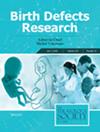E-Cigarette and Vanillin Exposure Disrupts Cardiovascular Development in Xenopus laevis
Abstract
Introduction
Congenital heart defects (CHDs) are a leading cause of perinatal mortality, and maternal cigarette smoking is a well-established risk factor. In recent years, electronic cigarette (e-cigarette) use has surged, yet its safety during pregnancy remains poorly defined. Human epidemiologic studies have yielded inconsistent results, underscoring the need for complementary approaches. Developmental vertebrate models provide a cost-effective first-line strategy to identify potential risks. Here, we used the Xenopus laevis model to investigate the effects of e-cigarette aerosol extracts on cardiovascular development during embryogenesis.
Methods
Xenopus embryos were exposed during critical stages (20–40) to an aerosolized extract of a vanillin flavored e-liquid (e-cigAM-F), nicotine only, or vanillin. Transgenic lines (gata1:GFP for blood, flk1:GFP for vessels) and O-dianisidine staining assessed blood and vascular development. Cardiac structure was evaluated by microscopy and immunofluorescence (troponin T); ventricular area and heart rate were quantified. RT-qPCR and reanalysis of existing RNA-Seq data assessed expression changes in cardiac and hematopoietic genes.
Results
Embryos exposed to e-cigAM-F had decreased levels of hemoglobin subunits, gata1, and heme biosynthetic genes in craniofacial tissues after exposure. Blood delivery to the head was reduced, though blood remained near the heart. Vascular labeling indicated altered vessel organization but not gross loss of vasculature. Tadpoles exposed to e-cigAM-F had smaller ventricles and modestly reduced heart rate. Early cardiogenic transcripts were also suppressed. Vanillin, but not nicotine, exposure phenocopied the e-cigAM-F effects with respect to heart morphology.
Conclusions
Exposure to an aerosolized e-liquid (particularly its vanillin component) perturbs cardiovascular development in Xenopus, manifesting as reduced cranial blood flow, vascular abnormalities, smaller ventricles, and slower heart rate. These results implicate flavoring chemicals (rather than nicotine alone) in developmental cardiotoxicity, underscoring the need for mechanistic and mammalian model studies of inhaled e-liquid constituents.


 求助内容:
求助内容: 应助结果提醒方式:
应助结果提醒方式:


